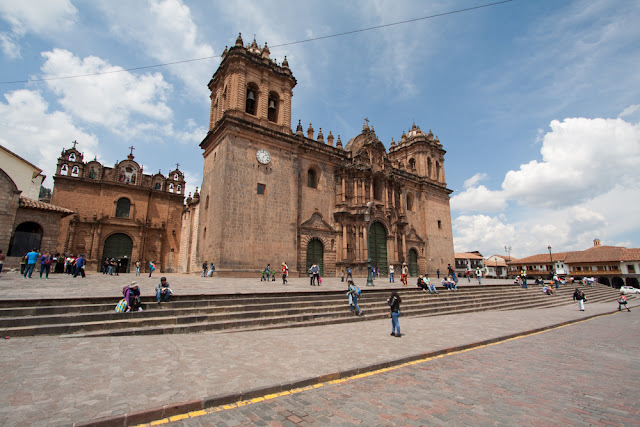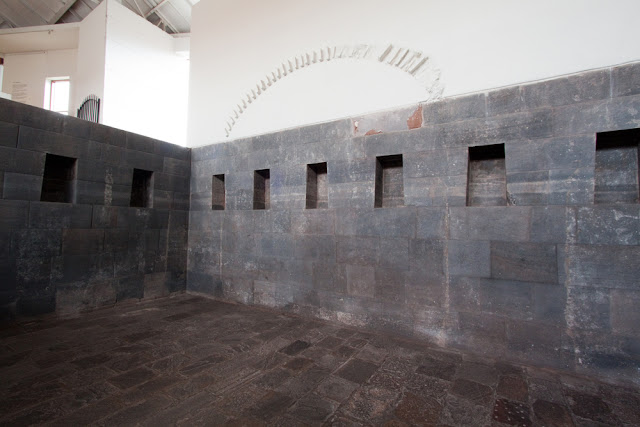As much as we wanted to sleep in, we were both awake before 5am. Not sure if it was the preceding day's wake ups, tired and sore legs, or both. Oh well. It gave us time to "wash" our really smelly clothes and begin organizing our bags for our trip to the jungle.
After a delicious breakfast at the hotel, we wandered around Cusco, trying to find souvenirs and check out some of the markets. We were a little surprised that most places were not open yet at 9:30am. Definitely a slower paced city than what we are used to in the States.
Following a couple hours of exploration, we went back to the hotel to wait to be picked up for the City Tour. To our surprise, we had the same driver pick us up. His English is worse than my almost non-existent Spanish. Eventually, he left us in front of the Cathedral Basilica of the Assumption of the Virgin and told us to wait for a lady with a red flag. Ok. This is more odd than the first time he picked us up. About 20 minutes later, our tour group showed up, and we started exploring the cathedral, the oldest in South America and largest in Peru. It was absolutely beautiful. Unfortunately, I was only allowed to take pictures of the exterior. The gold, silver, and wood carvings beautifully adorned this Spanish style cathedral.
Our next stop was Qurikancha, a Spanish cathedral built on top of an Inca temple. When the Spanish conquered the Incas in the 1530s, they destroyed all temples and homes of important people to build cathedrals and homes in their place. Fortunately, some of the Inca temples remained here as part of the foundation for the priests homes. The earthquake of 1950 destroyed many of the Spanish structures. Following the earthquake, the Peruvian government decided not to rebuild the Spanish construction but rebuild and preserve the Inca walls.
Once we finished touring Qurikancha, we loaded up the buses to check out three Inca sites: Saksaywaman, Tambomachay, and Q'inqu. At Saksaywaman, we saw the largest stone used in any Inca construction at ~130 tons. Saksaywaman was used as a ceremonial site by the Incas until the Spanish destroyed it to use the stones for construction in Cusco below. Later, an Inca rebellion was launched from Saksaywaman, but that was crushed by the Spanish. Today, visitors can see what is left and imagine it in its heyday, along with have a great view over Cusco and of the Cristo Blanco. It is still used for the Festival of the Sun on June 21, the winter (for them) solstice. Tambomachay was a lodge and checkpoint for people hiking the Inca Trail from Cusco to Urubamba and Machu Picchu. Finally, Q'inqu was a natural cave that the Incas used to mummify their important people. As it has been throughout, I am always amazed at the Incas resourcefulness and unwillingness to change the landscape for their construction. This is probably a good reason the Inca construction has survived multiple major earthquakes, greater than 7 on the Richter Scale, while the Spanish buildings were destroyed and rebuilt.
Once we returned to Cusco, we finished shopping for souvenirs and packing for the jungle. We chose to order room service when we could not find the recommended guinea pig restaurant, so we could have a more relaxing evening. To our surprise, Raul, our waiter from our previous times at the restaurant, delivered our room service. It was fun visiting and sharing part of our journey with him. We have nothing but positive things to say about our stay at the Marriott in Cusco. Truly fantastic!

























No comments:
Post a Comment